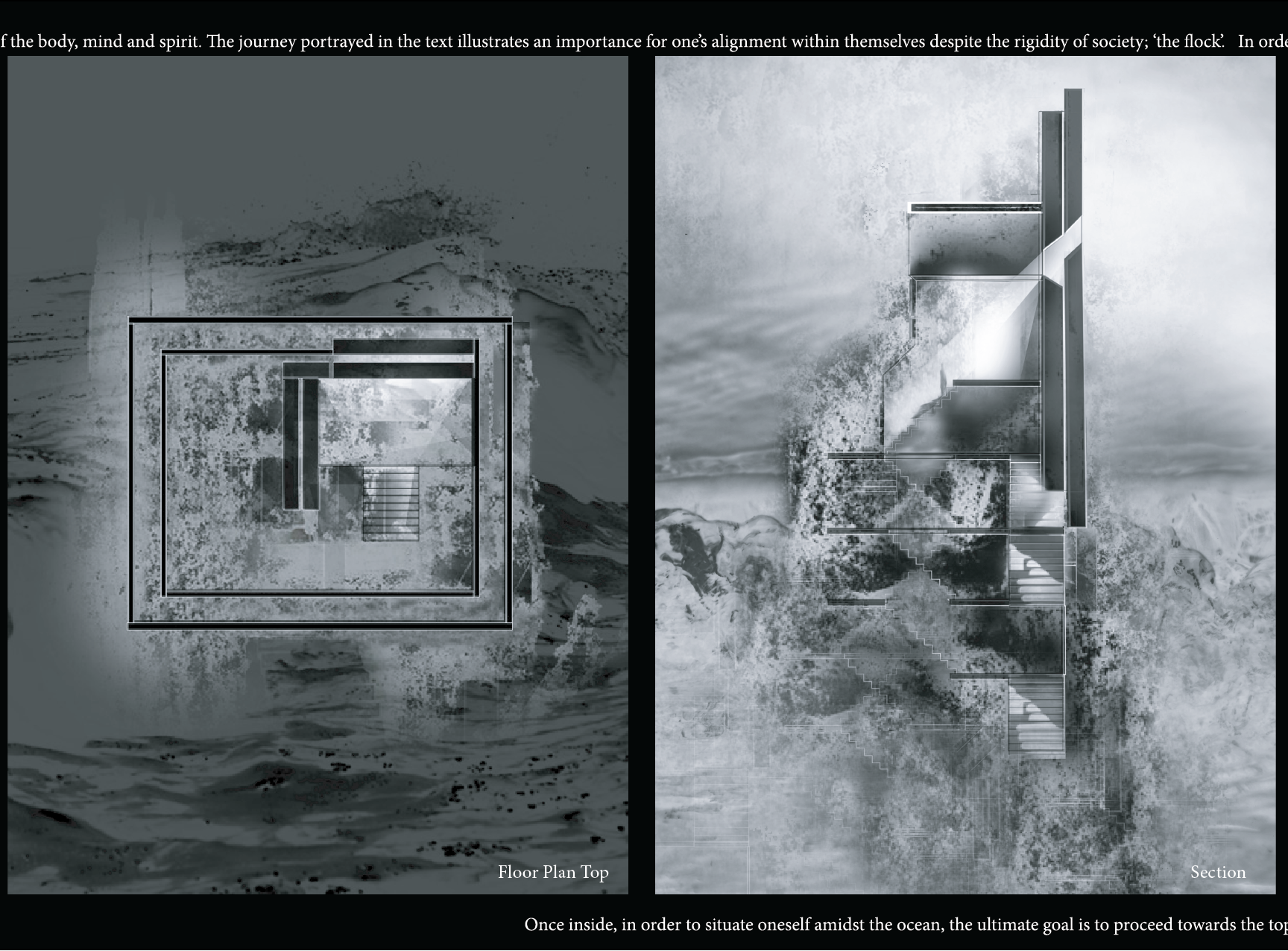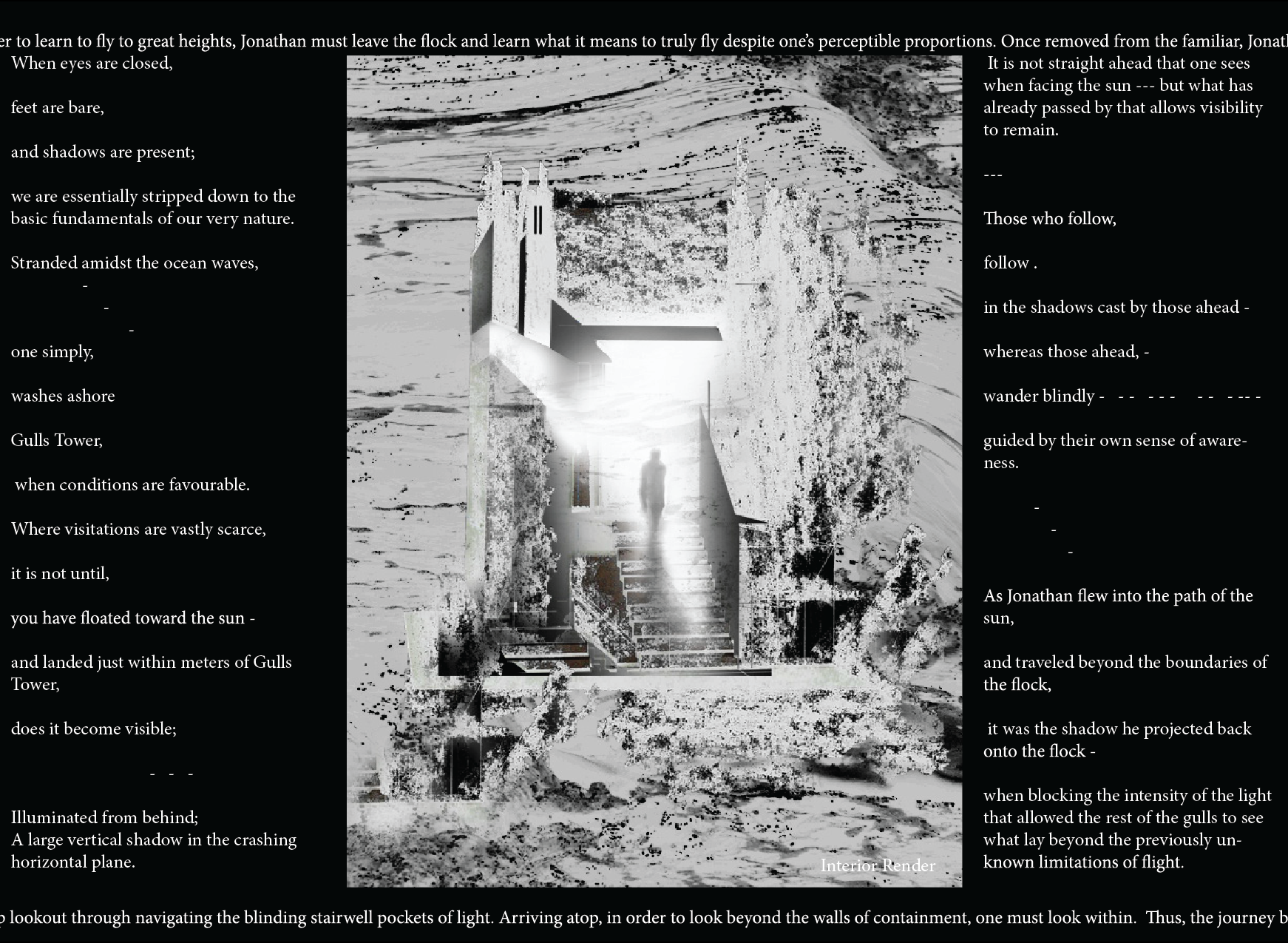Gulls Tower.
Literary Source Design
3rd Year Architectural Communications
Jonathan Livingston Seagull is a novel written by Richard Bach in which a young seagull undergoes the transition of self discovery and transcendence of the body, mind, and spirit. Those who follow, follow in the shadows cast by those ahead of them, whereas those ahead, wander blindly guided by their own sense of awareness. As Jonathan flew into the path of the sun and traveled beyond the boundaries of the flock, it was the shadow he projected back onto the flock when blocking the intensity of the light that allowed the rest of the gulls to see what lay beyond the previously unknown limitations of flight. It is not straight ahead that one sees when facing the sun, but what has already passed by that allows visibility to remain.
Once removed from the familiar, Jonathan undergoes many life-altering paths and encounters other gulls who assist him in aligning himself within each wingspan to discover the true meaning of flight. This journey of transcendence into the ultimate state of being is explored through the use of light and shadow to provide a false sense of direction within the unknown.
Stranded amidst the ocean waves, one simply washes ashore Gulls Tower when conditions are favorable. Visitations are vastly scarce, for it is not until you have floated toward the sun and landed within meters of Gulls Tower does it become visible; illuminated from behind, forming a large vertical shadow in the otherwise light-reflectent horizontal plane.
Once inside, in order to situate oneself amidst the ocean, the ultimate goal is to proceed towards the top lookout through navigating the blinding stairwell pockets of light. However, once atop, in order to look beyond the walls of containment, one must look within. Thus, the journey back through the tower is now visible, for it is due to one’s own shadow that any sense of direction exists.





